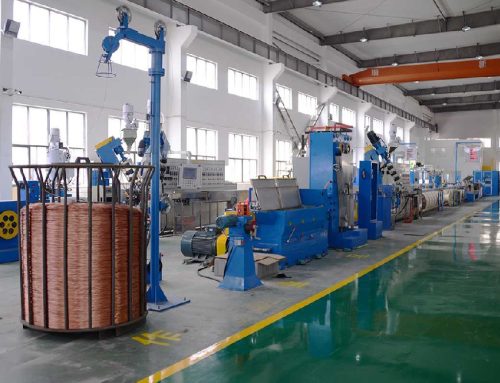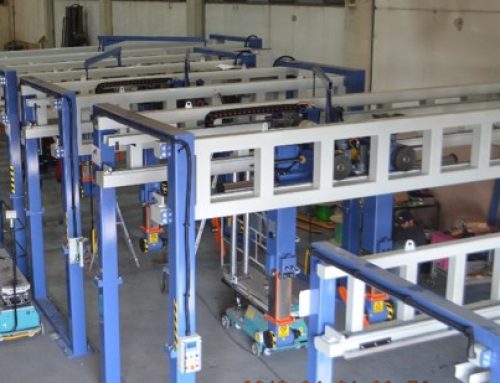In today’s rapidly evolving technological landscape, power cable manufacturers play a crucial role in ensuring seamless connectivity and energy transmission. From residential homes to large industrial facilities, the demand for reliable and high-quality power cables is more significant than ever. This article delves into the industry of power cable manufacturing, highlighting the key aspects that drive success in this competitive field.

Overview of the Power Cable Industry
The power cable industry is a significant segment of the global electrical equipment market, with a substantial market size that continues to grow annually. Key players in this industry, such as Prysmian Group, Nexans, and Southwire, lead in innovation and production capacity. Regulatory standards, such as those set by the International Electrotechnical Commission (IEC), ensure that products meet stringent safety and performance criteria, making compliance a critical aspect of manufacturing.
Types of Power Cables
Power cables are categorized based on their voltage capacity and application:
- Low Voltage Power Cables: Used in residential and light commercial applications, these cables typically handle voltages up to 1 kV.
- Medium Voltage Power Cables: These cables are used in industrial settings and power distribution networks, with voltage ratings between 1 kV and 36 kV.
- High Voltage Power Cables: Essential for transmitting electricity over long distances, these cables operate at voltages above 36 kV.
- Specialty Power Cables: These include cables designed for specific environments, such as fire-resistant, submarine, and armored cables.
Manufacturing Process of Power Cables
The manufacturing process of power cables is intricate, involving several stages:
- Raw Materials Used: The core materials include copper or aluminum conductors, insulating materials like XLPE (cross-linked polyethylene), and protective sheathing.
- Step-by-Step Manufacturing Process:
- Conductor Production: The metal is drawn into wires and twisted into strands.
- Insulation: The conductor is coated with insulating materials to prevent electrical leakage.
- Sheathing: An additional protective layer is applied to safeguard the cable from environmental factors.
- Testing and Quality Control: Cables undergo rigorous testing for electrical performance, durability, and compliance with international standards.
Applications of Power Cables
Power cables have diverse applications across various sectors:
- Residential Applications: Power cables in homes are essential for connecting appliances, lighting, and other electrical systems.
- Commercial and Industrial Applications: Factories, offices, and commercial buildings rely on power cables for operational efficiency and safety.
- Renewable Energy Applications: Power cables are crucial in the renewable energy sector, connecting solar panels, wind turbines, and other sustainable energy sources to the grid.
- Transportation and Infrastructure: Power cables support the electrification of transportation networks, including railways and electric vehicles.
Challenges Faced by Power Cable Manufacturers
The power cable industry faces several challenges:
- Supply Chain Disruptions: The global supply chain for raw materials can be unstable, affecting production timelines and costs.
- Environmental Concerns: Manufacturers are under pressure to reduce their environmental impact, leading to the adoption of eco-friendly materials and processes.
- Technological Advancements and Adaptation: Rapid technological changes require manufacturers to continuously innovate to stay competitive.
Innovations in Power Cable Technology
Innovation is driving the future of power cables:
- Smart Cables and IoT Integration: These cables can monitor their own performance, providing real-time data on energy consumption and potential faults.
- High-Temperature Cables: Designed to withstand extreme conditions, these cables are used in environments where traditional cables would fail.
- Eco-friendly and Sustainable Solutions: Manufacturers are developing biodegradable and recyclable materials to reduce the environmental footprint of their products.
Future Trends in the Power Cable Industry
The future of the power cable industry is shaped by several trends:
- Increasing Demand for Renewable Energy: The transition to renewable energy sources is driving demand for specialized power cables.
- Advancements in Material Science: New materials are being developed to enhance the performance and durability of power cables.
- Global Market Expansion: As emerging markets develop, the demand for power infrastructure, and consequently power cables, is expected to rise.
Case Studies of Leading Power Cable Manufacturers
Leading companies in the power cable industry are setting benchmarks for innovation and sustainability:
- Company A: Known for its advancements in sustainable cable production, reducing carbon emissions across its manufacturing processes.
- Company B: Successfully expanded into emerging markets, adapting its products to meet local demands and regulatory requirements.
- Company C: A leader in technological innovation, pioneering the development of smart cables integrated with IoT technology.
Practical Tips for Choosing the Right Power Cable Manufacturer
When selecting a power cable manufacturer, consider the following factors:
- Evaluating Quality and Compliance: Ensure that the manufacturer adheres to international standards and provides certifications for their products.
- Assessing Technological Capabilities: A manufacturer that invests in R&D and innovation is more likely to produce cutting-edge products.
- Considering Global Reach and After-Sales Support: Choose a manufacturer with a global presence and a strong after-sales support system to ensure timely assistance and product availability.
Frequently Asked Questions (FAQ)
What are the key materials used in power cable manufacturing?
The primary materials include copper or aluminum for conductors, XLPE for insulation, and various protective sheathing materials.
How do power cable manufacturers ensure product quality?
Manufacturers implement strict quality control measures, including testing for electrical performance, durability, and adherence to international standards.
What trends are shaping the future of the power cable industry?
The industry is moving towards eco-friendly production, smart cable technology, and an increased focus on renewable energy applications.
Conclusion
The power cable manufacturing industry is critical to modern infrastructure, driving the distribution of electricity across residential, commercial, and industrial sectors. As the industry continues to evolve, driven by technological innovation and sustainability efforts, it is essential for manufacturers to adapt and lead the way in providing reliable, high-quality products. For consumers and businesses alike, choosing the right power cable manufacturer involves careful consideration of quality, compliance, and technological advancement.



